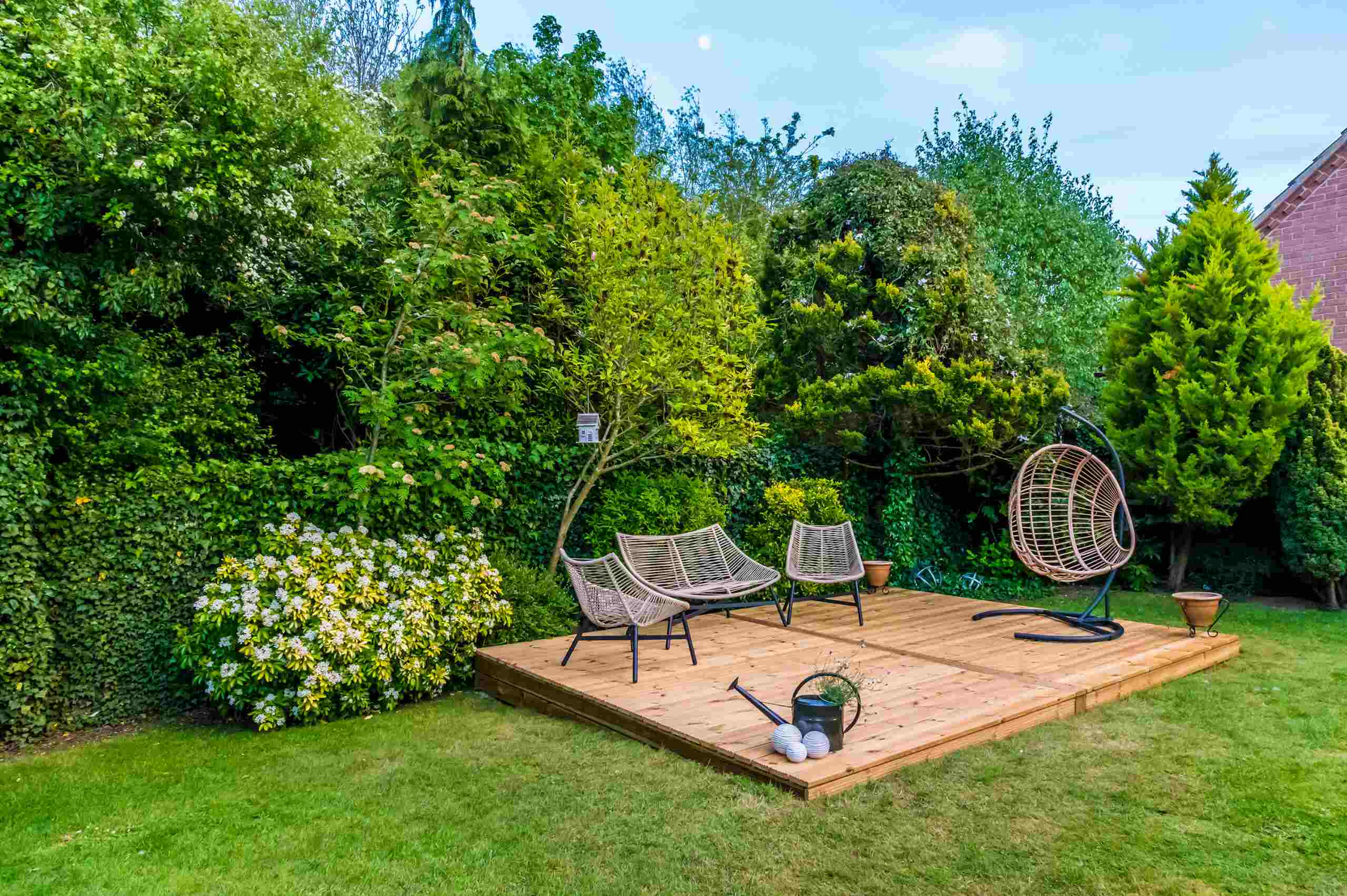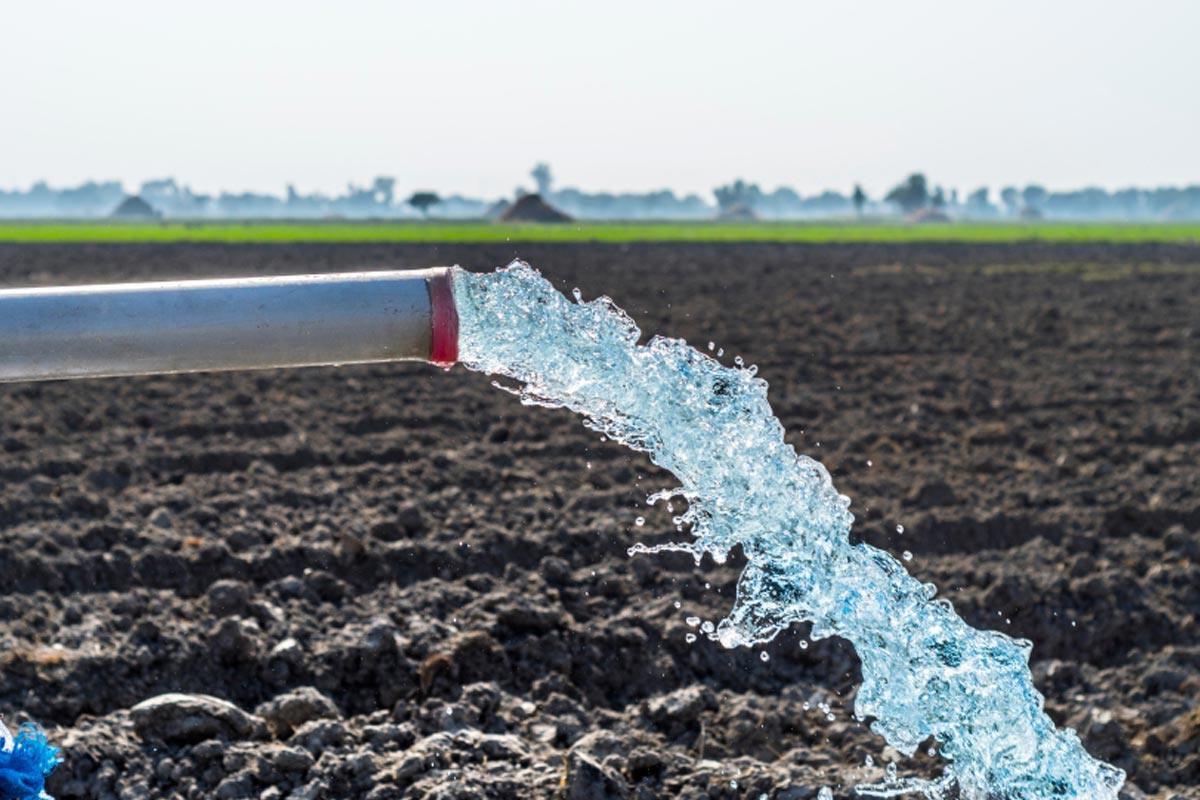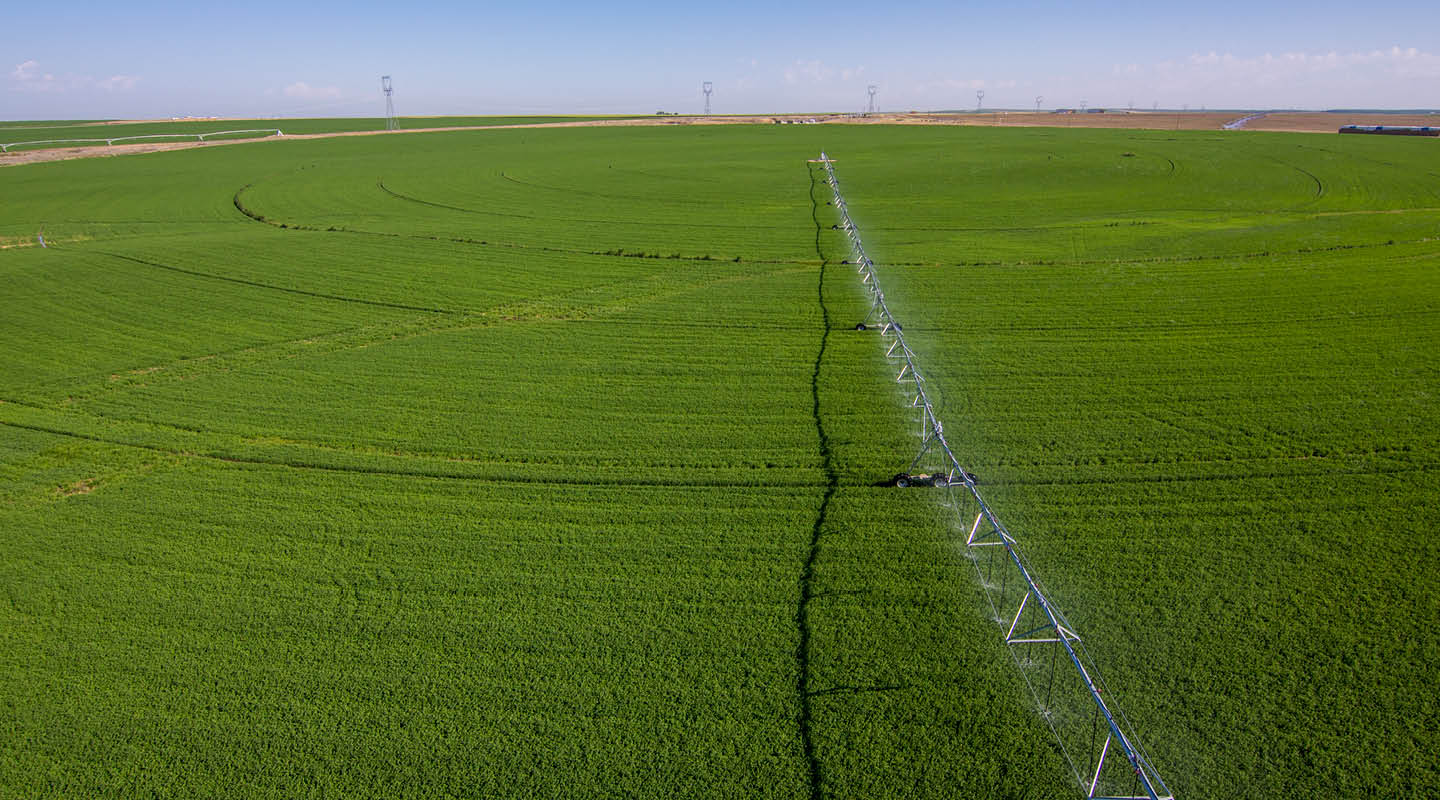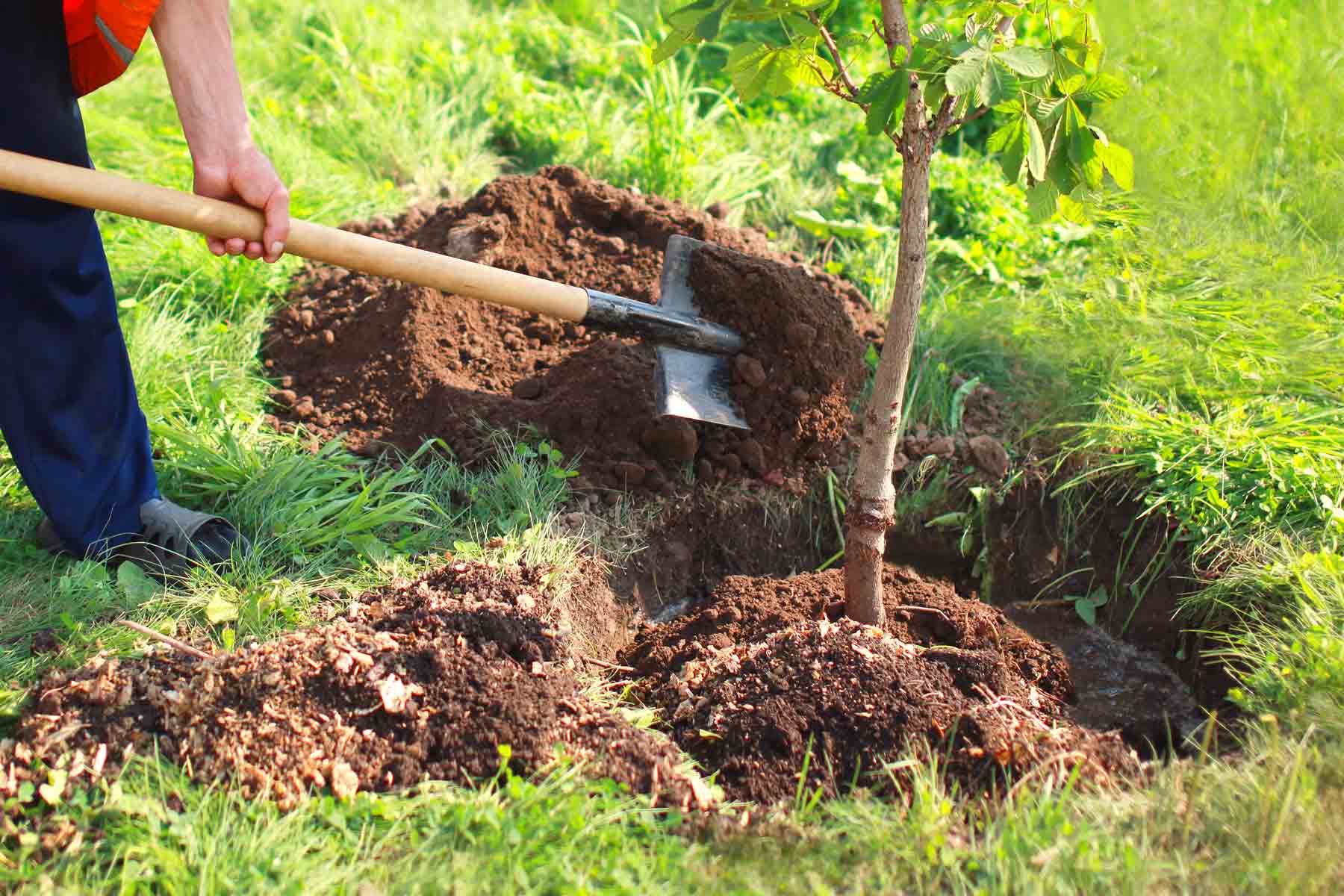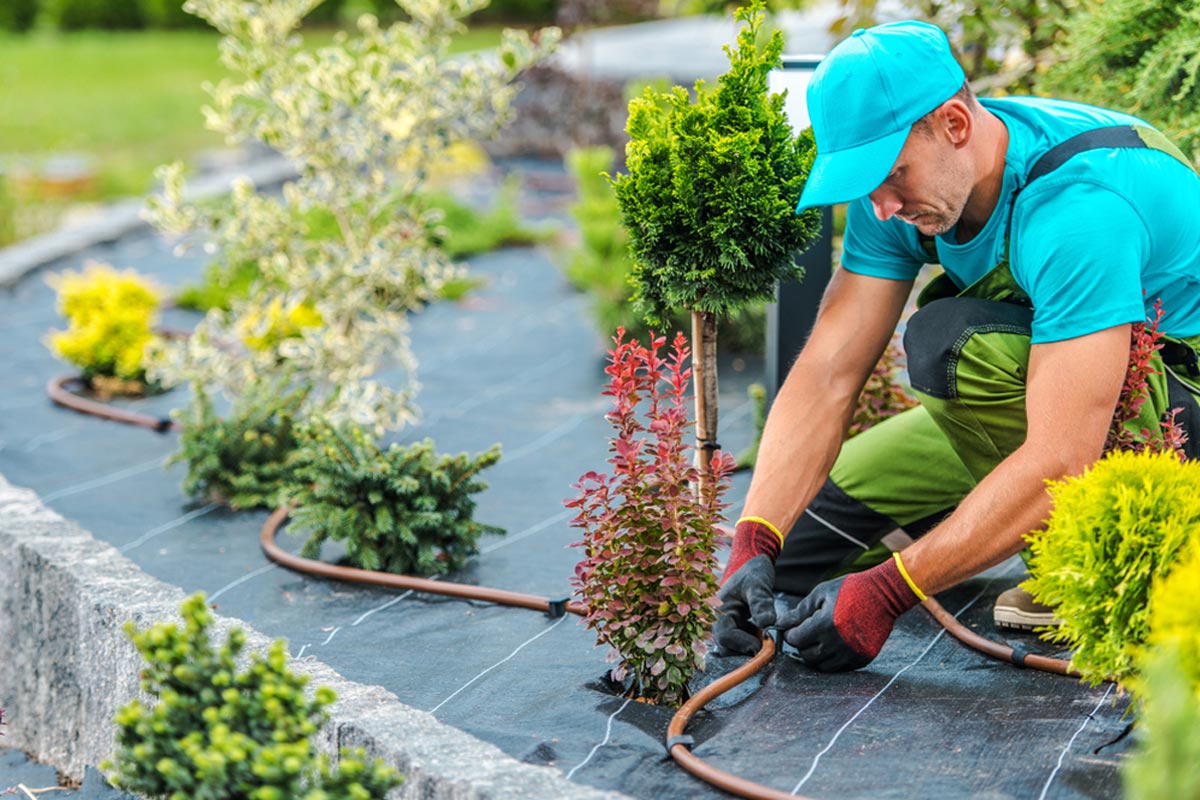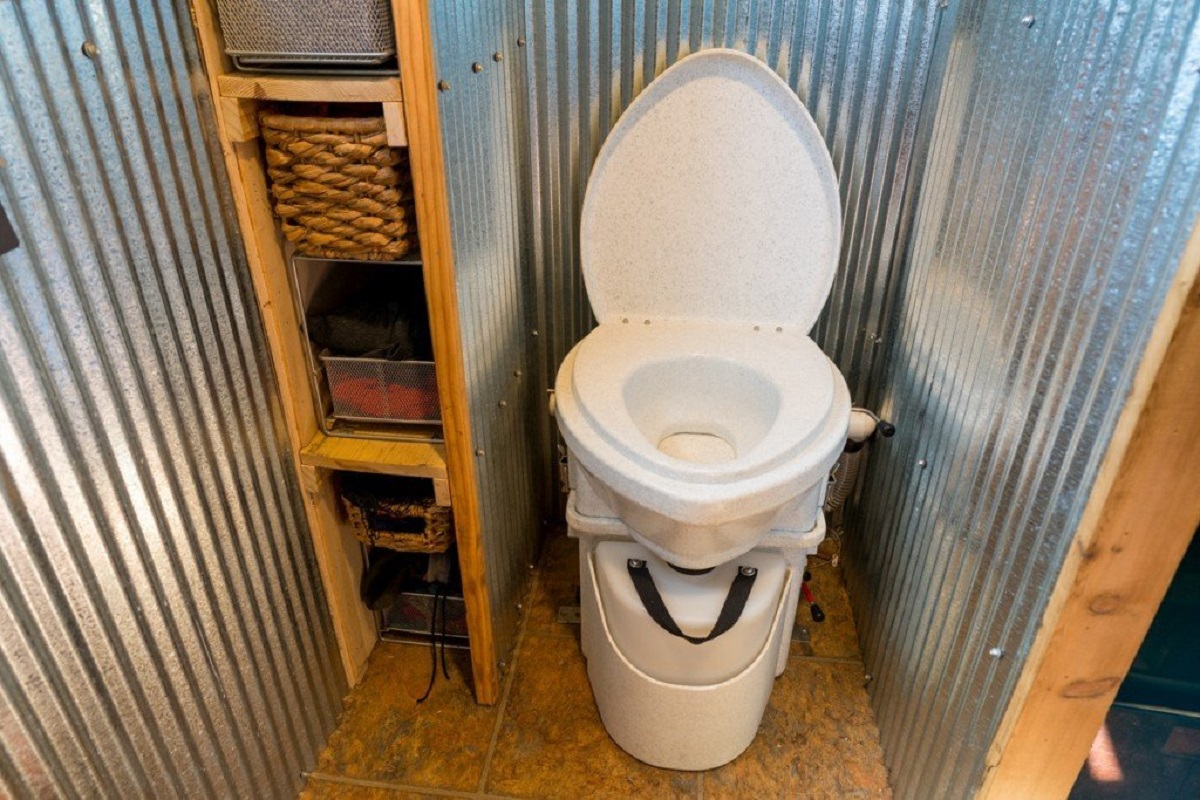Home>Garden Design>How Much Does It Cost To Put A Pool In Your Backyard
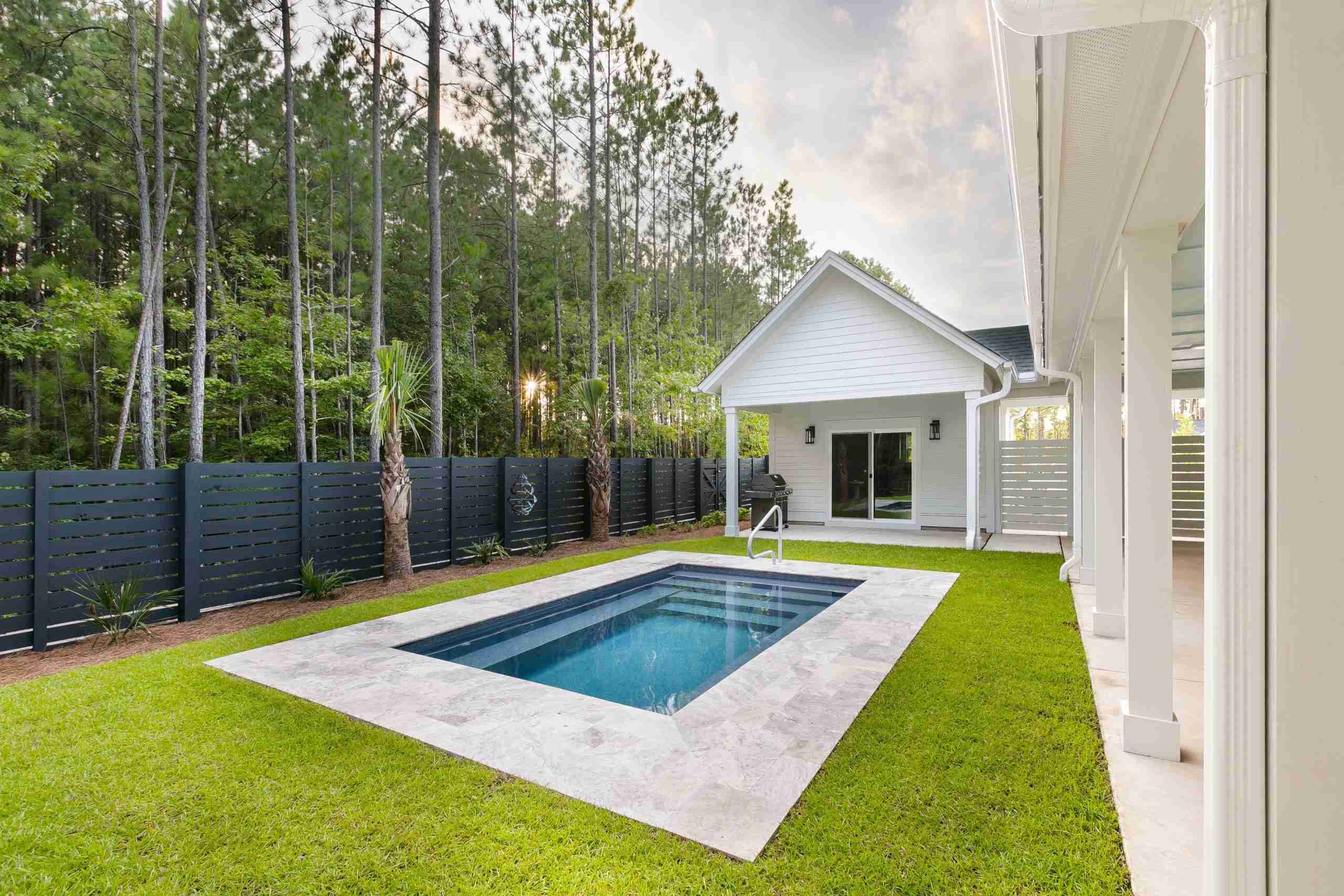

Garden Design
How Much Does It Cost To Put A Pool In Your Backyard
Modified: January 22, 2024
Discover the cost of installing a backyard pool and start planning your garden with our helpful guide. Find out how much it costs to put a pool in your backyard and create your dream outdoor space with ease.
(Many of the links in this article redirect to a specific reviewed product. Your purchase of these products through affiliate links helps to generate commission for Chicagolandgardening.com, at no extra cost. Learn more)
Table of Contents
Introduction
Welcome to the world of backyard pools! If you’ve ever dreamt of transforming your outdoor space into a personal paradise, installing a pool may be the perfect solution. Not only can a backyard pool provide a refreshing oasis for relaxation and entertainment, but it can also enhance the value and appeal of your property.
However, before you dive headfirst into the pool installation process, it’s important to understand the various factors that can influence the cost. While the cost of putting a pool in your backyard can vary significantly depending on your location, the size and type of pool, and the customization options you choose, having a general understanding of the expenses involved can help you plan and budget accordingly.
In this article, we will explore the different factors that affect the cost of installing a backyard pool, outline the various types of pools available, discuss the necessary permits and regulations, delve into the site preparation and construction process, and explore the additional costs to consider. We will also touch on the ongoing maintenance and operating costs to help you make informed decisions regarding your pool investment.
So, if you’re ready to take the plunge and create your own personal oasis, let’s dive into the world of backyard pool installation and explore the various costs and considerations involved.
Factors Affecting the Cost of Installing a Backyard Pool
When it comes to the cost of installing a backyard pool, several factors come into play. Understanding these factors is crucial to estimate the total expenses accurately and plan for your pool project effectively.
1. Pool Size and Shape: The size and shape of your pool will significantly impact the overall cost. Larger pools generally require more materials, excavation, and labor, resulting in higher expenses. Additionally, custom-shaped pools or pools with unique features may also increase the cost due to the complexity of construction.
2. Pool Construction Material: There are various pool construction materials available, such as fiberglass, vinyl, and concrete. Each material has its own pros and cons, and the cost will vary accordingly. Fiberglass tends to be more affordable, while concrete pools are often the most expensive due to their versatility and customization options.
3. Site Access and Conditions: The accessibility of your backyard and the condition of the site can impact the cost of pool installation. If your property has limited access or requires extensive excavation and leveling, additional expenses may be incurred for equipment rentals and more labor-intensive work.
4. Pool Features and Add-Ons: The features and add-ons you choose for your pool can significantly impact the cost. This includes elements like waterfalls, slides, lighting, and heating systems. While these enhancements can elevate your pool experience, they also come with an additional price tag.
5. Landscaping and Decking: The area surrounding the pool, including landscaping and decking, can greatly contribute to the overall aesthetic appeal of your backyard oasis. Factors such as the type of materials used, the size of the deck or patio, and the complexity of the landscaping design will all influence the total cost.
6. Location and Local Codes: The location of your property and the specific building codes and regulations in your area can impact the cost of installing a backyard pool. Some regions require permits, inspections, and adherence to specific safety standards, all of which can add to the overall expenses.
By considering these factors and their potential effects on cost, you can better plan and budget for your backyard pool installation project. Understanding the various elements involved will ensure that you have a clear idea of the expenses associated with your dream pool.
Types of Backyard Pools
When it comes to choosing a backyard pool, there are several types to consider, each offering unique features and benefits. Understanding the different pool options available can help you select the one that best suits your needs, preferences, and budget.
1. In-Ground Pools: In-ground pools are the most popular and versatile choice for backyard installations. They are constructed by excavating the ground and then building a permanent structure using materials like concrete, fiberglass, or vinyl. In-ground pools offer a wide range of customization options and can be tailored to fit any shape or size requirements. However, they are typically more expensive than other types due to the necessary excavation and construction work.
2. Above-Ground Pools: As the name suggests, above-ground pools are installed above the ground level, making them a more affordable option compared to in-ground pools. These pools are made of durable materials such as steel, aluminum, or resin, and they come in various sizes and shapes. While above-ground pools may not offer the same level of customization as in-ground pools, they are relatively quick and easy to install, making them a popular choice for those on a budget or those who prefer a temporary pool solution.
3. Natural Pools: Natural pools, also known as eco-friendly or chemical-free pools, have gained popularity in recent years due to their environmentally conscious design. Instead of using traditional chemical treatments, natural pools rely on aquatic plants and a separate filtration system to maintain water quality. These pools blend seamlessly with the surrounding landscape and offer a more sustainable and eco-friendly swimming experience. However, natural pools may require ongoing maintenance and may not be suitable for all climates or regions.
4. Lap Pools: Lap pools are designed specifically for swimming laps and are typically long and narrow in shape. These pools are an excellent choice for fitness enthusiasts or those with limited space. Lap pools can be built in-ground or above-ground and offer a streamlined and efficient swimming experience.
5. Plunge Pools: Plunge pools are typically smaller in size and are designed for cooling off, relaxation, and hydrotherapy. These pools are often equipped with built-in seating or hydrotherapy jets and can be a great addition to a backyard oasis. Plunge pools are a more budget-friendly option and require less space, making them suitable for smaller yards or patio areas.
By considering the different types of backyard pools available, you can choose the one that aligns with your vision, budget, and lifestyle. Whether you prefer the versatility of an in-ground pool, the affordability of an above-ground pool, or the eco-friendliness of a natural pool, there is a perfect solution to transform your backyard into a refreshing and inviting oasis.
Permits and Regulations
Before starting any backyard pool installation, it is crucial to understand and comply with the necessary permits and regulations in your area. Local building codes and regulations are put in place to ensure the safety of the installation process and the ongoing use of the pool. Failure to obtain the required permits or meet the specified regulations could result in fines, delays, or even the removal of the pool.
Here are some key considerations regarding permits and regulations:
1. Building Permits: Most jurisdictions require a building permit for any new pool construction. The permit process typically involves submitting detailed plans and specifications of the pool project to the local building department for approval. The fees for building permits can vary depending on your location and the size of the project.
2. Fencing and Safety Requirements: Many areas have strict regulations regarding pool safety, including the installation of barriers, fencing, and safety covers. These regulations are in place to prevent accidents, especially involving children. Fencing requirements usually specify the height, type of material, and proper latches and gates. It is important to familiarize yourself with these regulations and ensure compliance to maintain a safe pool environment.
3. Electrical and Plumbing Permits: In addition to building permits, you may also need electrical and plumbing permits for the installation of lights, pumps, and other pool equipment. Hiring licensed professionals to handle the electrical and plumbing work ensures that the installation meets safety standards and satisfies the permit requirements.
4. Homeowners’ Association (HOA) Approval: If you live in a neighborhood with a homeowners’ association, you may need to obtain their approval before installing a backyard pool. HOAs often have specific guidelines and restrictions in place to maintain the aesthetic harmony of the community. It is important to review your HOA’s governing documents and consult with them regarding your pool installation plans.
5. Utility and Sewer Line Checks: Before beginning your pool construction, it is vital to have the utility lines located and checked to avoid any damages during the excavation. Also, verify the location of sewer lines and ensure that the pool installation adheres to the required setback distances from these lines.
It is advisable to work closely with a professional pool contractor who is familiar with the local construction codes and regulations. They can help navigate the permit process and ensure that your pool installation meets all the necessary requirements. By following the appropriate permits and regulations, you can enjoy your backyard pool with peace of mind, knowing that it has been installed safely and in compliance with the law.
Site Preparation
Proper site preparation is essential for a successful backyard pool installation. Before beginning construction, various steps need to be taken to ensure the site is ready for the pool installation process. Here are some key considerations for site preparation:
1. Excavation: The first step in site preparation is excavating the area where the pool will be installed. This involves removing the topsoil and digging down to the desired depth for the pool. The excavation process must be done carefully, following the pool design specifications and taking into account factors such as drainage and soil stability.
2. Soil Testing: It is important to conduct soil testing before installing a backyard pool. Soil testing helps identify any potential issues, such as soil stability, drainage problems, or the presence of rocks or other obstacles that may affect the pool construction process. Based on the soil test results, the necessary adjustments can be made to ensure a stable and durable pool foundation.
3. Siting and Leveling: Proper siting and leveling of the pool area are vital to ensure the pool is installed on a stable and even surface. The site should be carefully surveyed to determine the optimal location for the pool, taking into account factors such as sunlight, accessibility, and views. Once the site is selected, the ground must be leveled to create a smooth and balanced base for the pool.
4. Drainage Considerations: Adequate drainage is essential to prevent water accumulation around the pool area. Proper drainage systems should be designed and implemented to direct water away from the pool and prevent potential damage or instability. This may involve grading the site, installing French drains, or implementing other drainage solutions based on the specific characteristics of the property.
5. Utility Connections: If the pool requires electrical and plumbing connections, these should be planned and executed during the site preparation phase. Professionals should handle the electrical and plumbing work to ensure safety and compliance with the necessary codes and regulations. All utility connections should be properly installed and tested before moving forward with the pool construction process.
6. Accessibility: Ensuring proper access to the pool area for construction equipment, such as excavators and concrete trucks, is crucial. Any obstacles that may impede the movement of equipment should be identified and temporarily removed or altered to facilitate construction. It is important to plan for a safe and clear pathway for the transportation of materials and machinery.
By investing time and effort in thorough site preparation, you can lay a strong foundation for your backyard pool. Adequate excavation, soil testing, leveling, and drainage considerations will ensure a stable and well-functioning pool that can provide years of enjoyment for you and your family.
Pool Construction
Once the site preparation is completed, it’s time to move forward with the pool construction process. Pool construction involves several key steps that vary depending on the type of pool being installed. Here is an overview of the general pool construction process:
1. Pool Layout and Marking: The pool design is carefully reviewed, and the layout is marked on the prepared site. This includes marking the pool shape, the location of features such as steps or benches, and the positioning of the equipment and plumbing connections.
2. Formwork and Steel Reinforcement: For concrete pools, formwork is created to define the shape of the pool and hold the concrete in place during pouring. Steel reinforcement, in the form of rebars or mesh, is installed to provide strength and stability to the pool structure.
3. Plumbing and Electrical Work: Plumbing lines are installed to connect the pool’s filtration system, pumps, and any water features. Electrical work, including wiring for lights, heaters, and other pool equipment, is also conducted during this phase. It is crucial to hire licensed professionals for the plumbing and electrical installations to ensure safety and compliance with codes and regulations.
4. Pool Shell Construction: The pool shell is constructed using the chosen material, such as concrete or fiberglass. For concrete pools, the concrete is poured and then smoothed and leveled to create a solid and watertight structure. Fiberglass pools, on the other hand, are typically pre-fabricated and delivered to the site for installation.
5. Tile and Coping: Once the pool shell is complete, tiles are installed on the interior of the pool to provide a smooth and attractive surface. Coping, which can be made of various materials such as stone, concrete, or pavers, is installed around the pool’s perimeter to provide a finished edge and a transition between the pool and the surrounding area.
6. Filtration and Equipment Installation: The pool’s filtration system, including the filter, pump, and any additional equipment such as heaters or chemical feeders, is installed during this phase. Proper installation and placement of the equipment are crucial for efficient and effective pool operation.
7. Finishing Touches: Once the main construction is complete, final touches such as filling the pool with water, testing and balancing the water chemistry, and installing any additional features or accessories are done. This includes the installation of pool lights, handrails, ladders, and any other customized features desired.
It is important to hire a professional pool contractor who specializes in pool construction to ensure that each step of the process is carried out correctly and efficiently. A reputable contractor will have the experience, expertise, and knowledge to deliver a high-quality pool that meets your expectations.
Pool Equipment and Accessories
Once the pool construction is complete, it’s time to consider the necessary equipment and accessories to enhance your pool experience. Proper pool equipment and accessories not only contribute to the functionality and cleanliness of the pool but also add convenience and enjoyment. Here are some essential pool equipment and accessories to consider:
1. Filtration System: A reliable and efficient filtration system is vital for maintaining clean and clear pool water. The filtration system removes debris, contaminants, and particles from the water, ensuring a safe and hygienic swimming environment. Depending on your pool size and specific requirements, options range from sand filters to cartridge filters or advanced systems like diatomaceous earth (DE) filters.
2. Pump: The pool pump is responsible for circulating the water through the filtration system and back into the pool. It plays a crucial role in maintaining proper water circulation, which helps distribute chemicals and ensures a healthy balance of sanitizers and pH levels. Energy-efficient variable speed pumps are becoming increasingly popular due to their lower operating costs.
3. Chemicals and Water Testing: Proper water chemistry is essential for maintaining a balanced swimming environment. Pool chemicals such as chlorine or bromine are used to disinfect the water and prevent the growth of bacteria and algae. pH balancing chemicals are also necessary to maintain the optimal pH level. Water testing kits or electronic testers can help you monitor and adjust the water chemistry to ensure safety and comfort.
4. Pool Cover: A pool cover is an important accessory that helps protect your pool and keep it clean. It prevents leaves, debris, and dirt from entering the pool and reduces water evaporation, saving on water and chemical usage. Additionally, a pool cover helps retain heat, reducing heating costs and keeping the pool water at a comfortable temperature.
5. Cleaning Equipment: Various cleaning equipment is available to keep your pool in pristine condition. This includes pool vacuums, skimmers, and brushes. Automatic pool cleaners are a popular option as they provide efficient and hassle-free cleaning, effectively removing dirt and debris from the pool’s surfaces and walls.
6. Safety Equipment: Safety should always be a top priority when it comes to pool ownership. Pool safety equipment such as pool alarms, fences, and safety covers can help prevent accidents and provide peace of mind, especially if you have children or pets.
7. Pool Accessories: To enhance your pool experience, consider adding accessories such as pool lights for nighttime swimming, water features like waterfalls or fountains, slides or diving boards, and loungers or floats for relaxation. These accessories can add a touch of personalization and enjoyment to your pool oasis.
When selecting pool equipment and accessories, it is important to choose products that are of high quality and meet the safety standards. Consulting with a professional pool builder or supplier can help you determine the most suitable equipment and accessories for your specific pool and lifestyle.
Additional Costs to Consider
When budgeting for a backyard pool, it is important to take into account the additional costs that may arise throughout the process. Besides the initial construction costs, there are several other expenses that you should be prepared for. Here are some additional costs to consider:
1. Landscaping and Hardscaping: The area surrounding the pool may require landscaping and hardscaping to enhance its visual appeal and functionality. This can involve laying down turf, installing plants or shrubs, constructing pathways, or adding patio areas. These additional improvements can significantly contribute to the overall aesthetic and convenience but should be factored into the project budget.
2. Decking or Patio: Depending on your preferences, you may choose to install a deck or patio around your pool. This can provide a comfortable space for lounging, sunbathing, or entertaining. The cost of decking material, labor, and any necessary permits should be considered when estimating the additional expenses.
3. Pool Permits and Inspections: In addition to the initial building permit, there may be ongoing permits and inspections required throughout the lifespan of your pool. This can include periodic safety inspections, electrical inspections, and water quality testing. These permits and inspections are necessary to ensure the continued safety and compliance of your pool, and their associated fees should be factored into your overall pool budget.
4. Pool Maintenance Equipment: To keep your pool in optimal condition, certain maintenance equipment will be required. This can include pool brushes, nets, vacuum heads, and telescopic poles for regular cleaning. Additionally, investing in a pool cover reel system for easy handling of the pool cover can make maintenance more convenient.
5. Energy Costs: Operating a pool requires energy, which can result in increased utility costs. Heating the pool, running the filtration system, and operating any additional pool equipment will contribute to these expenses. Consider the energy efficiency of your pool equipment choices to help minimize long-term energy costs.
6. Insurance and Pool Maintenance Services: It is advisable to have adequate insurance coverage for your pool, including liability insurance to protect against accidents or injuries. Additionally, some pool owners choose to hire professional pool maintenance services to handle routine cleaning, water testing, and equipment maintenance. These ongoing expenses should be considered when calculating the overall cost of owning a pool.
By taking into account these additional costs, you can have a more realistic understanding of the financial commitment associated with owning a backyard pool. Proper planning and budgeting will help ensure that you can enjoy your pool for years to come without any unexpected financial surprises.
Maintenance and Operating Costs
While the initial construction cost of a backyard pool is a significant investment, it’s essential to consider the ongoing maintenance and operating costs associated with pool ownership. Maintaining a pool in proper working order requires regular care and attention. Here are some maintenance and operating costs to keep in mind:
1. Chemicals and Water Testing: Maintaining balanced water chemistry is crucial for a safe and enjoyable swimming experience. This involves regularly testing the water and adding chemicals such as chlorine, pH adjusters, and algaecides as needed. The cost of these chemicals can vary depending on the size of the pool and the frequency of water testing and treatment.
2. Energy Expenses: The energy required to operate pool equipment, such as the pump, heater, and lights, contributes to the ongoing operating costs. Energy-efficient equipment choices can help reduce these expenses in the long run. Additionally, utilizing a pool cover when the pool is not in use can help minimize heat loss and reduce heating costs.
3. Water Usage: Pools require regular water top-ups due to evaporation, backwashing the filter, or draining for maintenance purposes. The cost of water varies depending on your location and local utility rates. Conserving water by using a pool cover and monitoring for leaks can help reduce your water usage and associated costs.
4. Maintenance and Cleaning: Routine pool maintenance tasks include skimming the surface, vacuuming the pool, and cleaning the filters. These tasks can be done by the pool owner or hired professionals. If you choose to hire professional pool maintenance services, the cost of their services should be factored into your budget. Additionally, regular inspections and maintenance of pool equipment, such as pumps and filters, may be required to ensure their longevity and efficiency.
5. Repairs and Upgrades: Over time, pool equipment or structures may require repairs or upgrades. This can include repairs to the pump, filter, or heater, or resurfacing the pool interior. Additionally, you may wish to upgrade certain features or add new accessories to enhance your pool experience. It’s important to budget for these potential repair and upgrade costs as they arise.
6. Insurance and Liability: Owning a pool carries inherent risks, and it is essential to have proper insurance coverage in place. Liability insurance should be considered to protect yourself in the event of accidents or injuries that may occur in or around the pool. The cost of insurance premiums should be factored into your pool ownership expenses.
By considering the ongoing maintenance and operating costs associated with pool ownership, you can better plan your budget and ensure the proper care and longevity of your pool. Regular maintenance and responsible operation will help keep your pool in good condition and provide you with years of enjoyment.
Conclusion
Installing a backyard pool can transform your outdoor space into a personal oasis, providing a refreshing and enjoyable retreat right at your doorstep. However, it is important to have a comprehensive understanding of the costs and considerations involved before taking the plunge.
Factors such as the size and type of pool, site preparation, permits, and regulations can all affect the overall cost of installing a backyard pool. By carefully considering these factors and working with a professional pool contractor, you can ensure that your pool project stays within your budget and meets all the necessary requirements.
In addition to the initial construction costs, it is important to account for ongoing maintenance and operating expenses. Regular pool maintenance, chemical treatments, water testing, and energy costs all contribute to the long-term cost of owning a pool. Budgeting for these expenses and planning for regular upkeep will help ensure the continued beauty and functionality of your pool.
Remember to factor in additional costs such as landscaping, decking, and pool accessories to create your desired pool environment. These aesthetic elements can further enhance the enjoyment and visual appeal of your backyard oasis.
Overall, owning a backyard pool can provide years of relaxation, entertainment, and memories. By carefully considering the cost factors, adhering to regulations, and properly maintaining your pool, you can create a safe and inviting space for family and friends to enjoy.
So, take the time to plan, budget, and explore the options available to you. With the right knowledge and preparation, you can transform your backyard into a haven that brings joy, fun, and relaxation for years to come.
